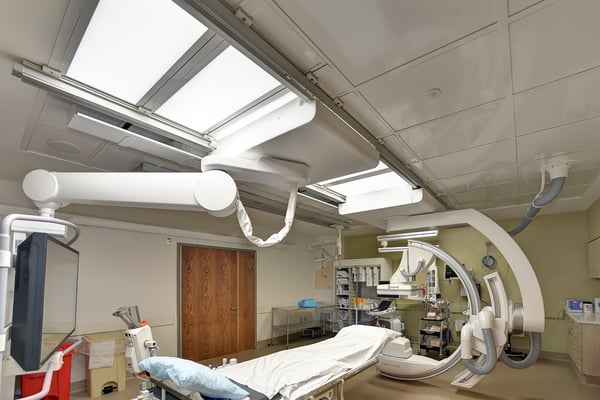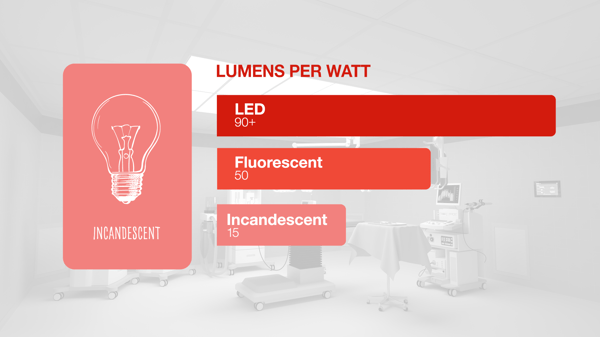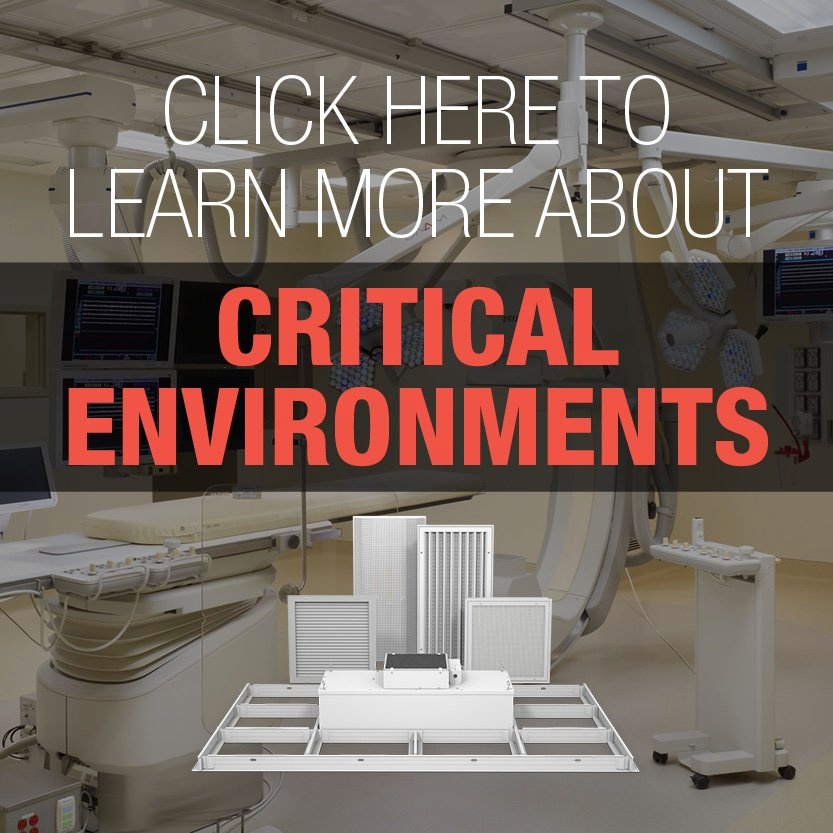Application of Lighting Metrics in Operating Rooms and Cleanrooms
Learn the basics of indoor lighting, including how to compare various forms of lighting with specific quantitative metrics, as well as how to apply lighting in operating rooms and cleanrooms in an efficient manner while meeting code requirements.

Lighting Metrics
Light can be measured in a number of different ways. Each quantitative metric below measures a different component of a light source. Although it will vary by application, to compare one or more light sources accurately, some combination of the below metrics should be considered.
- Quality
- Color Temperature
- Luminous Efficacy
- Lifespan
- Illuminance
Quality
Lighting quality is reported as the “Color Rendering Index or CRI”. This is measured on a scale of 0-100, and indicates how true colors look under various light sources. Light sources with higher CRI values; produce more true, saturated colors. High CRI values, typically greater than 80, are desirable in applications where visibility of color is of the utmost importance. Operating rooms require 80+ CRI for exam lighting and 90+CRI for surgical lighting. For your reference, daylight is 100 CRI while most fluorescent lighting is in the range of 70 CRI.
CRI is based on the color rendering ability of a light source of 8 specific color samples. The Illuminating Engineering Society (IES) has created IES-TM-30-15, a more comprehensive rating system that evaluates the color rendering ability of a light source on 99 color samples, including R9, a deep red that is essential in healthcare applications. At this time, the lighting industry still primarily uses CRI, but IES-TM-30-15 and other more robust metrics should become more prevalent going forward.
Color Temperature
Color temperature explains the hue of a light source, and is measured in Kelvin. Temperatures in the 3000K range are very warm in color (yellow and red), while colors in the 5000K range are cool in color (blue). Generally, lower temperature lighting is preferred in living spaces, while higher temperature lighting is desirable for highly visual tasks. Operating rooms and cleanrooms typically use lighting in the 3800K to 5100K range.

Luminous Efficacy
Luminous Efficacy is measured in Lumens per Watt. This is the amount of light produced in Lumens compared to the energy consumption in Watts. Although there are slight differences, luminous efficacy can also be thought of as efficiency – how effectively the light source converts energy to visible light.
Typically incandescent bulbs have very low luminous efficacy, in the range of 15 lm/W, while LEDs have very high luminous efficacy, typically over 90 lm/W, hence why LEDs are recommended for saving energy.

Lifespan
The lifespan of an LED is measured as a function of brightness over time and is typically displayed as LXX>XX,XXX. The first number refers to the percentage of original brightness, while the second number refers to the number of hours for which that brightness will be upheld. For example, L80>60,000 means that the lights will maintain at least 80% of their brightness for 60,000 hours.

Illuminance
Illuminance describes the quantity of light that arrives at a particular surface, like an operating table or workstation. This is measured in Foot-Candles (IP unit) or Lux (SI unit). A Foot-Candle is one (1) Lumen per square foot, while Lux is one (1) Lumen per square meter. A common misconception is that one Foot-Candle is equivalent to 10 Lux, however the true value is 10.764 Lux.
Illuminance should not be confused with Luminous Flux or Luminous Intensity, which both describe the amount of light that is given off by a source, rather than the amount of light that arrives at a given surface.

Applications
Together, all of the above metrics can be used to evaluate lighting quality, and suitability for various applications.
Operating Rooms
For operating rooms IES Standard RP-29-16 Lighting for Hospitals and Health Care Facilities recommends:
- Excellent lighting quality with 80+ CRI for exam lighting and 90+CRI for surgical lighting
- A colour temperature in the range of 4000K-5000K
- Uniform illuminance with the absence of shadows and bright spots
- And a target illumance of 3,000 lux at the operating table, with a uniformity of 2:1 between the average and minimum illuminance values.
Cleanrooms
For cleanroom applications, there is no specific code requirements for illuminance, but rather some suggested guidelines. Anywhere from 500 to 2000 lux may be suggested depending on the tasks being completed. In these spaces colour temperature is generally in the range of 3100-5000K. Because there is no specific code requirements for lighting in these spaces, occupant comfort is the guiding principle.
Photometric Analysis
Price manufactures integrated lighting diffusers and fan filter units for use in hospital operating rooms and cleanrooms, the Ultrasuite and UltraFFU respectively.
Lighting suppliers, including Price, provide IES Files that contain information on luminous intensity that can be used to predict lighting output. If you’re using integrated lighting products in your next project, Price can validate your lighting design with photometric analysis.
For more information on integrating lighting products, please visit our website at pricecriticalenvironments.com.
Sources:
https://lumicrest.com/cri-quality-of-light-explained/
https://lumicrest.com/colour-temperature/
https://www.sciencedirect.com/topics/engineering/luminous-efficacy
https://www.ies.org/product/lighting-for-hospitals-and-healthcare-facilities/




